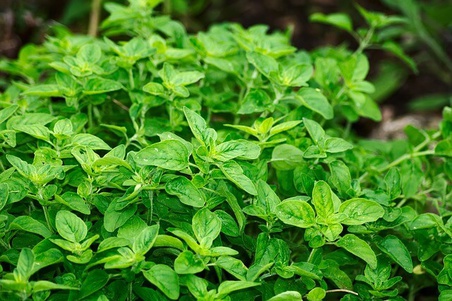Aromatic herbs are generally recognized for the unique flavors they bring to our food. But a new study published in the Journal of Agricultural and Food Chemistry (JAFC) has identified medicinal benefits, particularly with rosemary, oregano and marjoram, all of which contain specific compounds to fight diabetes.
Researchers at the University of Illinois at Urbana-Champaign (UIC) and the U.S. Department of Agriculture (USDA) took a closer look at these three herbs, which in previous research had shown qualities in maintaining blood sugar levels. Building on this, Elvira Gonzalez de Mejia and colleagues decided to test how each of these herbs impact type 2 diabetes.
Greenhouse-grown varieties of Greek oregano (Origanum vulgare), marjoram (Origanum majorana), Rosemary (Rosmarinus officinalis) and Mexican oregano (Lippia graveolens) were tested alongside commercial dry versions of the same herbs to see how they interact with the two key enzymes involved in insulin secretion and signaling, dipeptidyl peptidase IV (DPP-IV) and protein tyrosine phosphatase 1B (PTP1B).
The two fresh and dried varieties of rosemary and oregano found offer unique benefits

Compared to their dried commercial counterparts, greenhouse-grown rosemary and original varieties contain significantly higher polyphenol content. It has also been determined to have very important properties of inhibition of DPP-IV, an enzyme that, under normal conditions, eliminates excess incretin from the body. In diabetics, a lack of incretin can lead to high blood sugar levels, hence the need to reduce DPP-IV levels to compensate for this.
On the other hand, dried commercial varieties of rosemary, origan, and Mexican marjoram were found to be significant inhibitors of PTP1B, an enzyme that, when reduced or eliminated, helps to enhance insulin signaling and tolerance. In other words, reducing PTP1B levels may not only help improve the body's response to sugar intake and metabolism, but also help block the storage of harmful triglycerides.
Grown in greenhouses the Mexican oregano and rosemary contain phytochemicals that electrospray ionization liquid chromatography mass spectrometry tests have concluded have specific binding affinities for DPP-IV. Hispidulin, carnosol and eriodictyol are included among these, while cirsimaritin, and hispidulin naringenin have been shown to be more potent inhibitors of DPP-IV.
"There is a need to identify natural compounds that can help in the management of this disease," the authors wrote in their study, which notes that 8.3% of Americans currently suffer from type 2 diabetes, which costs the United States more than $175 billion annually in treatment.
Oregano and rosemary may be safer, more beneficial than popular anti-diabetic drugs
Although the herbs demonstrated similar or even greater efficacy than popular diabetes medications, the study authors are reluctant to recommend that people give up their medications in their favor. For now, they're following the usual line, saying more testing is needed, but people who want to try incorporating more rosemary and original into their diet are now sure to gain some benefits.
We need to test interaction studies with current drugs to make sure that there will not be an antagonistic effect and, on the other hand, maybe a synergistic effect," Gonzalez de Mejia told Yahoo Health. "We need clinical studies to demonstrate a dose-response relationship of products.



